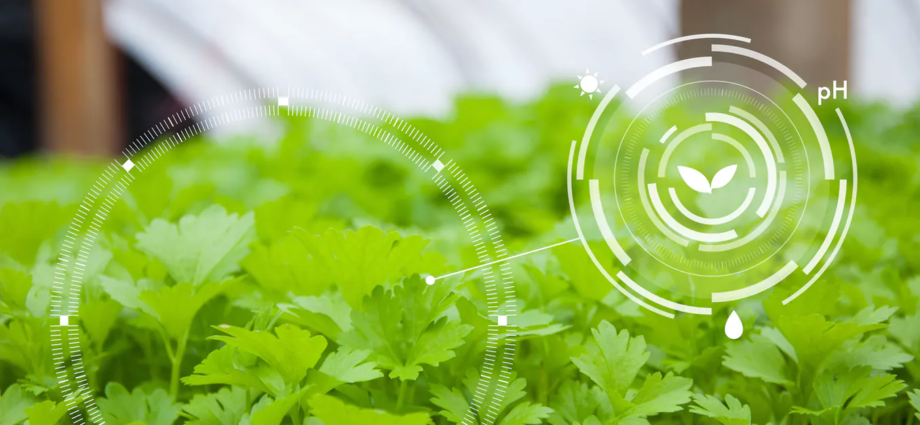
Tiny nanotechnologies are poised to have a huge impact on agriculture
Nanotechnology can improve farming efficiency without the need for new infrastructure. (Shutterstock)
M Cynthia Goh, University of Toronto
April 25, 2021
Science is about big ideas that change the world. But sometimes, big impacts come from the tiniest of objects.
Nanotechnology might sound like science fiction, but it represents technologies that have been developed for decades. Nanotechnological approaches have found real-world applications in a wide range of areas, from composite materials in textiles to agriculture.
Agriculture is one of the oldest human inventions, but nanotech provides modern innovations that could dramatically improve the efficiency of our food supply and reduce the environmental impact of its production.
Agriculture comes with costs that farmers are only too familiar with: Crops require substantial amounts of water, land and fuel to produce. Fertilizers and pesticides are needed to achieve the necessary high crop yields, but their use comes with environmental side effects, even as many farmers explore how new technologies can reduce their impact.

The tiniest of objects
Nanotechnology is the science of objects that are a few nanometres — billionths of a metre — across. At this size, objects acquire unique properties. For example, the surface area of a swarm of nanoscale particles is enormous compared to the same mass collected into single large-scale clump.
Varying the size and other properties of nanoscale objects gives us an unprecedented ability to create precision surfaces with highly customized properties.
Employing particles
Traditionally, applying chemicals involves first mixing the active ingredients in water and then spraying the mixture on crops. But the ingredients do not mix easily, making this an inefficient process that requires large quantities of water.
To improve efficiency and reduce environmental impact, farmers need their fertilizers and pesticides to reach their crops and be absorbed into the plant exactly where they’re needed — into the roots or the leaves, for example. Ideally, they could use just enough of the chemical to enhance the crop’s yield or protect it from attack or infection, which would prevent excess from being wasted.
Custom-made nanoscale systems can use precision chemistry to achieve high-efficiency delivery of fertilizers or pesticides. These active ingredients can be encapsulated in a fashion similar to what happens in targeted drug delivery. The encapsulation technique can also be used to increase the amount dissolved in water, reducing the need for large amounts.
Current applications
Starpharma, a pharmaceutical company, got into this game a few years ago, when it set up a division to apply its nanotechnological innovations to the agriculture sector. The company has since sold its agrochemical business.
Psigryph is another innovative nanotech company in agriculture. Its technology uses biodegradable nanostructures derived from Montmonercy sour cherries extract to deliver bioactive molecules across cell membranes in plants, animals and humans.
My lab has spent years working in nanoscience, and I am proud to see our fundamental understanding of manipulating polymer encapsulation at the nanoscale make its way to applications in agriculture. A former student, Darren Anderson, is the CEO of Vive Crop Protection, named one of Canada’s top growing firms: they take chemical and biological pesticides and suspend them in “nanopackets” — which act as incredibly small polymer shuttles — to make them easily reach their target. The ingredients can be controlled and precisely directed when applied on crops.

Existing infrastructure
One bonus of these nanotech developments is that they don’t actually require any new equipment whatsoever, which is a tremendous advantage in the financially challenging agricultural industry. Farmers simply mix these products using less water and fuel to make efficiency gains.
Other agricultural uses for nanotech include animal health products, food packaging materials and nanobiosensors for detecting pathogens, toxins and heavy metals in soil. It wouldn’t be a surprise to see the widespread use of these new applications in the near future.
As nanotechnologies take flight, this kind of productivity gain will be critical for farmers and a big deal for the rest of us, as the Earth’s population continues to grow and the effects of climate change become increasingly obvious. Farmers will need to do more with less.
Subscribe to our newsletter.
Fortunately, a few billionths of a metre is the very definition of less. With the help of tiny nanotech, global agriculture is on the verge of some very big things.
M Cynthia Goh, Professor, Chemistry, University of Toronto
This article is republished from The Conversation under a Creative Commons license. Read the original article.

